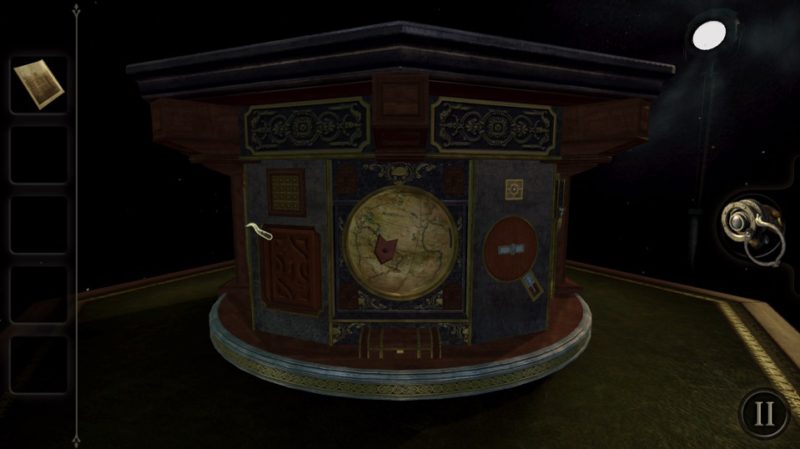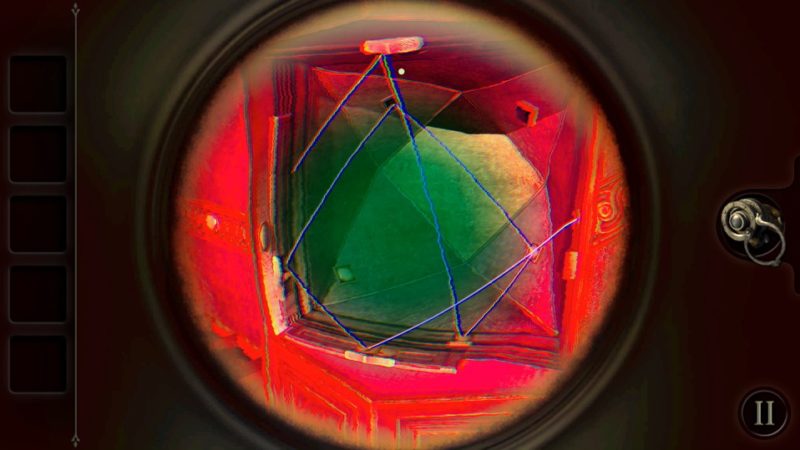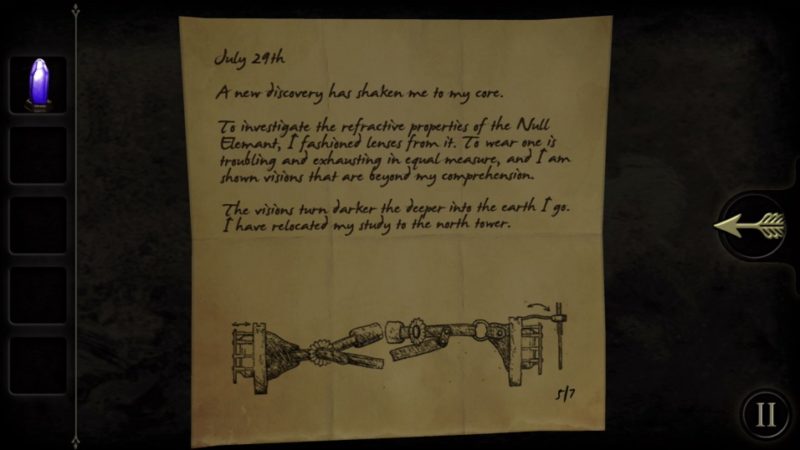
The Room is a puzzle game that revolves around the player unlocking a series of curious boxes by solving their arcane and inventive locking mechanisms. The game is the first in a series of related puzzle games by Team17, in partnership with developer Fireproof Studios that started in 2012, all of which will almost certainly find their way onto the Switch eventually as the gameplay lends itself well to the console’s features. It’s a short but reasonably priced game (10 USD) that offers a few hours of thoughtfully designed puzzles to wrap your brain around.

Story isn’t the main appeal of The Room but it does serve as a basic hook to get the player started. A letter left to the player by an alchemist explains that “the answers” to the player’s questions are hidden inside. Whatever those questions might be soon get replaced with new ones as clockwork, magic, and other curiosities merge together with each strange locking system encountered. What is inside the innermost box? Why are the contents so well protected?

The Switch’s versatility as a console gets utilized in two ways by The Room. The game can be played either on a TV with a single Joy-Con controller as a motion-controlled pointer, or by using the console’s screen as a touchpad. Both methods serve quite well for turning, examining, and manipulating various objects and mechanisms throughout the game for the most part. There are some issues with both, though, that emerge over a couple hours of play. In TV mode, the Joy-Con can be recalibrated with a simple button press to center your virtual pointer on the screen. This is a blessing because a single session can involve a lot of recalibrating; even with additional changes in the sensitivity settings the pointer inevitably floats off center after a while and needs recalibrating to avoid cramping your wrist to compensate. Curiously, the pointer is quite sensitive even when lowered while doing minute adjustments, like spinning dials or flipping switches, and it gets slightly frustrating at times when the pointer wiggles around just enough to prevent making those fine adjustments with precision.

In handheld mode, the tactile controls become much more natural: a carry over from the game’s origins on iOS and Android-based touch devices. Tapping, dragging, and pinching your fingers is quick, simple, and comfortable for tinkering with the puzzle boxes and their esoteric riddles. The downside is that even with the Switch’s generous screen size, spotting small text or fine perforations on the puzzle boxes that signal hidden buttons to push or false panels to slide gains additional difficulty. You can zoom in on everything that warrants interacting with, but actually noticing that there might be something worth zooming in on is harder in handheld mode than TV mode. It’s supposed to be a challenge in general, that’s part of the challenge, but the larger viewing space of TV mode might be more valuable than the comfier controls of handheld mode for some players.

The puzzles themselves are fascinating in a way reminiscent of the fantastical devices and contraptions found in Myst and its sequels back in 1993. Perhaps not quite as challenging since the answer to every puzzle is always somewhere close to the player (as opposed to exploring whole islands and worlds in Myst) but the sense of mystery and immersion is similar. A sliding block puzzle frees up a series of colored gemstones that become components in a light refracting puzzle that requires using a special eyepiece to adjust the beams correctly. Another puzzle requires pressing a timed switch and hunting around the box for a series of hidden buttons before time runs out. Individually, these puzzles are already interesting, but in concert with each other the entire process of moving from one to another can be engrossing.

Adding to the The Room’s atmosphere and appeal is the soundtrack. A series of relatively quiet but moody tunes, they invoke everything from curiosity and wonder to otherworldliness and hints of foreboding the further the player penetrates into the mysterious boxes. The visual aesthetic takes further advantage of this with the puzzles boxes and their tricks being rendered in loving detail as works combining the arcane and clockwork. Strange symbols and sigils adorn various parts of the boxes, sometimes requiring an eyepiece with a special lens to reveal their presence and then tilting the screen to align them to reveal a code or image. The heavy use of gears, brass instruments, and primitive camera and film machines gives a light Steampunk vibe to the setting, which seems rooted in the Victorian era with its blend of occult, and early modern technologies. All of this works together to immerse the player in the task of solving the boxes, like an aspiring alchemist following the strange research and inventions of those who preceded you.

The Room is a fine game, both reasonably challenging but also intriguing and approachable enough that many kinds of players will find it interesting enough to play with, if not complete, whether they enjoy puzzle games or not. With its unique atmosphere and premise, this one is likely to become something of a sleeper hit on the Switch just as it has on mobile devices and PC.
8.9/10
Take a look at The Room Launch Trailer:
Previously released on iOS, Android and PC, The Room has been re-built and remastered for Nintendo Switch and launches today priced at $9.99/£6.99/€8.99.
Nintendo Switch Review
-
Overall Score - 8.9/108.9/10
I've been gaming for 22 years, ever since my mom picked up a secondhand NES, and I've played on just about every gaming platform out there since. I think video games are one of most innovative and artistic mediums in the world today, and I'm always curious how developers will surprise me next.





More Stories
Nintendo Download Update (Dec. 4, 2025) – Metroid Prime 4: Beyond Now Available!
Red Dead Redemption and Undead Nightmare Available Now on Netflix, PS5, Xbox Series X|S, iOS, Android, and Nintendo Switch 2
SLEEP AWAKE Review for PlayStation 5